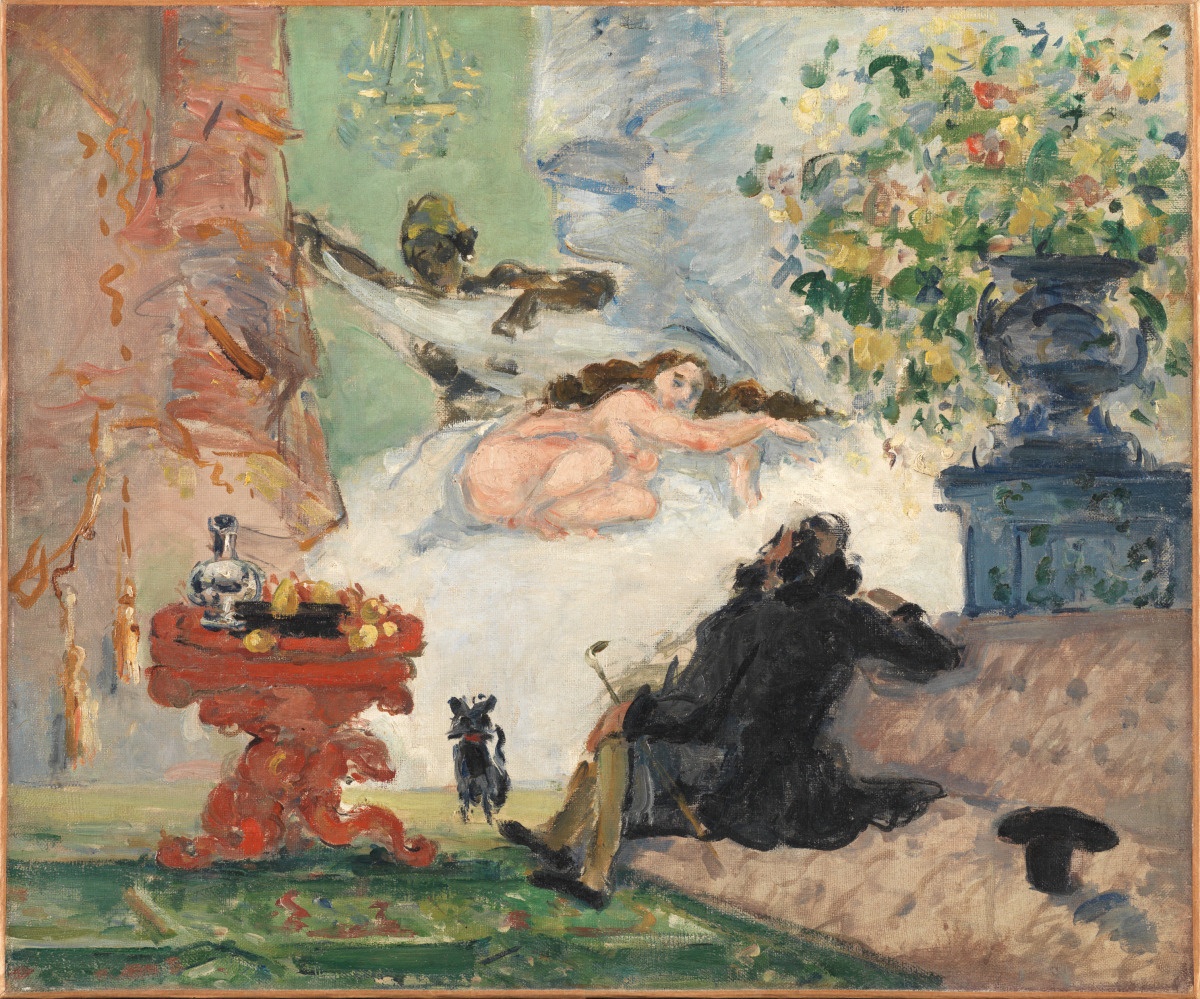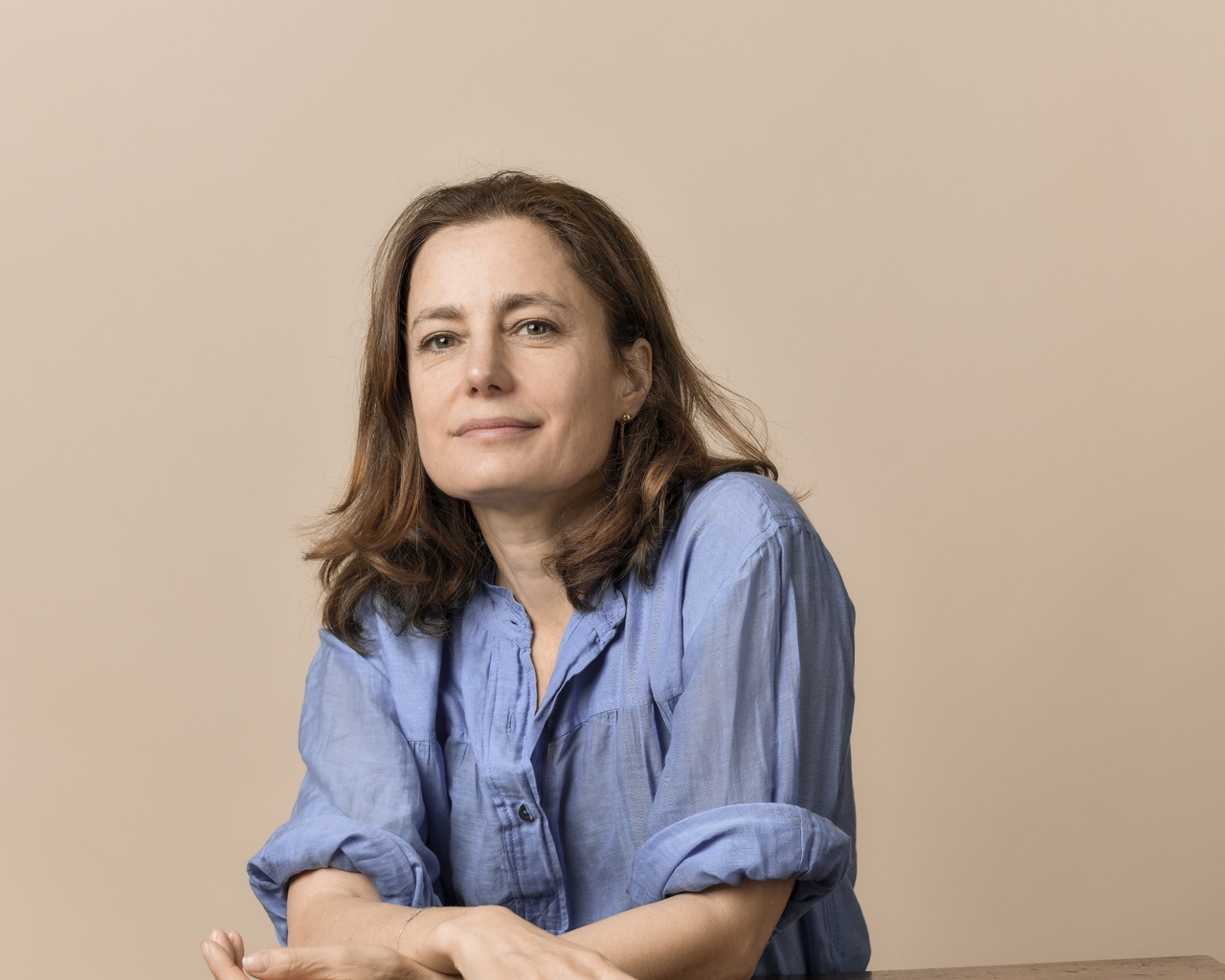SEEN & READ – BY ISABELLE GRAW Impressionismus, Colombe Schneck, Sanya Kantarovsky

“PARIS 1874: INVENTER L’IMPRESSIONISME”

Paul Cézanne, “Une moderne Olympia,” 1873–1874
“Paris 1874” is a once-in-a-century event. Not only does the show reconstruct an exhibition staged by the Impressionists that year, but it also presents a selection of works shown in the official Salon during the same period; this makes it immediately clear what was at stake in Impressionist painting, and what that project was directed against. After their works had been repeatedly refused by the Salon, artists including Edgar Degas, Claude Monet, Berthe Morisot, Paul Cézanne, Camille Pissarro, Alfred Sisley, and many others decided to stage their own commercial exhibition in the former atelier of the photographer known as Nadar. That the more conventional paintings of Pierre-Auguste Renoir were shown in the first room seems reasonable from today’s perspective – his cloudy portrait of a Parisienne (1874) in a royal-blue dress still has aesthetic appeal. Cézanne exhibited his “Modern Olympia” – a “bad painting” version of Édouard Manet’s Olympia, a work which caused a scandal when it was on view at the Salon in 1865. Since Manet wanted to carry on exhibiting in the Salon, Cézanne effectively “included” him in the independent exhibition against his will.
It is revealing to see how many of the artists involved in the exhibition have long slipped into obscurity – Louis Debras, Léon-Paul Robert, Edouard Béliard, Jean-Baptiste Léopold Levert, and Émilien Mulot-Durivage, to name but a few. The only woman represented was Berthe Morisot, who contributed several works, including Le Berceau (1872), which hung alongside Cézanne’s Olympia. The painting attests to Morisot’s radical use of the color white in acting out the conflict she felt between motherhood and her ambitions as an artist; here, this takes the form of a transparent white drape, which separates the child in the cradle from its mother while still enabling a deep connection between them.
Musée d’Orsay, Paris, March 26–July 14, 2024.
COLOMBE SCHNECK, PARIS-TRILOGIE

Colombe Schneck
Colombe Schneck has a very special way of writing – a mix of Marguerite Duras and French Elle. Using short sentences and an innocent-seeming narrative voice, it offers a sort of socio-analytic study of young women from bourgeois backgrounds. The first story in this trilogy draws on Annie Ernaux’s Happening (2000) in its unsparing description of the long-term psychological effects of an abortion. The second is more successful, in my view, since in depicting the lives of two upper-class friends from the 6th arrondissement – Colombe and Héloise – it also describes the class and gender relations that shape them. The two friends grow up privileged, visiting the “right” school and wearing the “right” clothes (which in the 1980s included labels like agnès b.). The comfort they took for granted back then becomes unaffordable following the death of their parents, however; while they each have all the diplomas needed for a career in France, they receive less pay and recognition than their male colleagues and are passed over for promotion. After becoming ill with cancer, Héloise undertakes a harrowing course of chemotherapy and eventually dies – a process Colombe follows and records in the book. Colombe realizes that, for all their early advantages, neither woman found happiness in life, either professionally or privately. As she stresses, the reasons for this are primarily systemic. The final story tells of a love affair that fails after a few months due to class differences.
Hamburg/Berlin: Rowohlt, 2024, 195 pages.
“SANYA KANTAROVSKY: TEACHERS AND STUDENTS”

Sanya Kantarovsy, “Breach,” 2024
Sanya Kantarovsky’s new paintings revolve around the complex of “surveillance and punishment,” with the Soviet school system in particular portrayed as a restrictive milieu in which students were beaten and tormented by their teachers. The large-format Breach (2024) features a threatening-looking male figure captured in profile, his gaze sternly fixed on a young girl who lies sleeping in bed; brown tones predominate in this scene, underlining its traumatic dimension. While the combination of “dirty old man” and sleeping boy produces a dynamic that recalls similar experimental setups by Pierre Klossowski and Balthus, Kantarovsky’s dreamer is surrounded by a white glow, radiating a similar energy to other “students” in these paintings. Their implied resistance is a passive one, however, as in Narrowing (2024), which features a bulky and abstract-seeming adult body holding one arm so firmly around the figure of a young boy that the latter appears to be being restrained or even strangled. And yet his pastose white face and Japonisme-esque closed eyes suggest this boy has long escaped to another world. As with Klossowski’s description of Roberte, the heroine of his novels, in Kantarovsky’s work, too, it is in the passive endurance of violence that a potential position of power appears. And yet the notion of the omnipotent victim that started with Georges Bataille has taken on a different meaning in post-#MeToo France.
Kantarovsky’s paintings fit in perfectly with the borgouis atmosphere of the gallery, a repurposed apartment on the Place de l’Alma, with A Lesson in Weakness (2024) set into the stucco frame above the mantelpiece as if it were part of the interior. This painting also features a figure inspired by the Japonisme aesthetic, crouching on a stool with its legs raised. The background is smeared with white and beige paint, transforming the “weakness” of the student, as implied by the exhibition title, into a painterly virtue.
Galerie Modern Art, Paris, May 24–September 21, 2024.
Translated by Ben Caton
Isabelle Graw is the cofounder and publisher of TEXTE ZUR KUNST and teaches art history and theory at the Hochschule für Bildende Künste – Städelschule in Frankfurt am Main. Her most recent publications include In Another World: Notes, 2014–2017 (Sternberg Press, 2020), Three Cases of Value Reflection: Ponge, Whitten, Banksy (Sternberg Press, 2021), and On the Benefits of Friendship (Sternberg Press, 2023).
Image credit: 1. Foto Rob Kulisek; 2. Courtesy Musée d’Orsay, Dist. RMN-Grand Palais / Patrice Schmidt; 3. © JF Paga; 4. © Courtesy the artist and Modern Art, London, photo Pierre Le Hors
